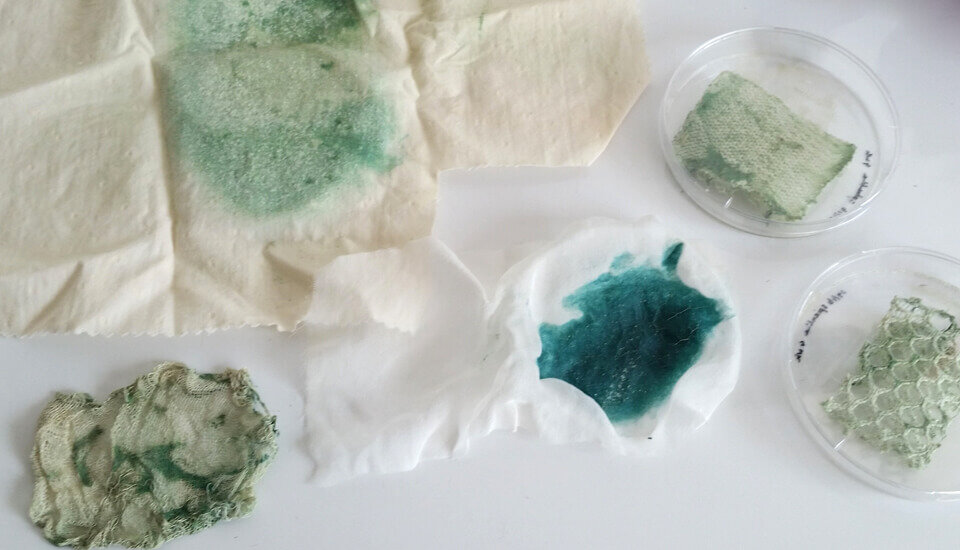

I probably don’t need to tell you that the clothes you buy, how you are care for them, and what happens to them after you’re done with them all adds up to an environmental impact of some sort.
If you value both personal style and keeping the planet livable, here are five small changes that can help lower your fashion footprint:
We can all probably admit that at some point or another we’ve lazily tossed something we wore for only a couple of hours into the laundry bin.
On the surface level, it might seem like a harmless action — You were going to run a load of wash anyways right?
While you might not be wasting extra water by throwing in an extra t-shirt here and there, there is a hidden impact.
Think about it: Every time you run a load of wash your clothes are put under an enormous amount of tension. They rub against each other at high-speed, typically in warm water which makes the fibers more vulnerable to damage.
With each cycle, the fibers that make your clothes are worn down a little more and more, until your garment starts to lose its shape or starts to pill.
I am not suggesting that you never wash your clothes again in the name of sustainability, you should definitely keep washing your clothes.
I am suggesting to be more mindful of how often and how you wash them to elongate the life of your garments.
While having your favorite garments for 4 times longer is a personal win, it’s also a huge win for the planet.
As it’s pointed out in The Book, Fashionopolis The Price of Fast Fashion and The Future of Clothes, If we lengthen the life of one out of every 5 garments in Europe just by 10% we could cut 3 million tons of CO2, save 150 million liters of water and divert 6.4 million tons of clothing from landfills.
Back when I was in high school, I loved the thrill of thrifting. I would head to my local Goodwill any chance I had. I loved prowling the racks for hidden gems among the rows of synthetic shirts and out-of-date pantsuits.
I knew that when I found something it was going to be unique. I could be certain that no one else at my school would have it, which was a rarity in a small town.
Thrifting wasn’t as trendy then. Classmates would often compliment my style, only to be shocked that I found it at the local Goodwill.
Sometimes friends would join me on my thrifting adventures. Most didn’t have the patients for it. Returning to the store week after week to sort through the piles of clothing without any guarantee that they would find something didn’t excite them.
That’s all different today. Buying second-hand has gone mainstream.
You no longer need to sort through piles and piles of clothing to find one cute shirt. Today there are endless places to thrift from, you can even do it without leaving your couch.
With resources like Vestiaire Collective and Depop, to the more traditional curated consignment shops and vintage pop-up markets, second-hand shopping is easier than ever.
Buying second-hand not only elongates the life of garments, which we already know can have a huge positive impact but also stops more garments from going into production.
This means fewer resources used and wasted and less pollution.
Thrifting won’t stop the production of new clothes altogether. It will however reduce the overall production of new clothing. Even a small reduction could have a big impact.
Consider jean production: It takes roughly 1,800 gallons of water to make just one pair. The greenhouse gases emitted during the production are equivalent to driving around 80 miles. That’s just one pair of the almost two billion pairs produced each year.
Why not sign up for the weekly roundup
Sometimes there are those things that you need to get new. Underwear for one is something that I think we can all agree should be bought new.
There are plenty of other situations that could call for something to be bought new. Maybe you have a special event and need something specific for it, or you’re very particular about how your pants should fit.
Whatever the case, if you need to buy new, there are ways to do it responsibly.
The most preferable thing would be to buy from a proven sustainable brand.
A good point of reference for this is the platform Not Just a Label. The platform is a showroom for brands that are pushing fashion-forward. Although they show more than just sustainable brands, you can easily filter to see sustainable/ethical brands.
If you decide to shop at a fast-fashion retailer there are still ways you can buy responsibly.
For starters, you can buy from their “sustainable” or “conscious” lines. While it can be argued that these lines are more of a marketing tactic than the company truly trying to become sustainable, it’s still better than nothing.
Whether we like it or not money speaks. If more people choose to spend on the “conscious” or “sustainable” offerings, more companies will invest in it.
Wherever you end up shopping there are a few things to keep in mind when it comes to fabrics.
You should always avoid PVC, or Polyvinyl Chloride. The synthetic material is a known carcinogen when it biodegrades. This material is found most often in sequins, raincoats, and patent leather coating (sad, I know).
To create virgin polyester each year we use about 70 million barrels of crude oil. If possible try to buy garments with little or no polyester. This can be difficult because polyester is in over 60% of all garments.
Instead of polyester look for materials that come from renewable resources like viscose rayon, lyocell, or modal.
While these fabrics are still manmade and require chemicals to be produced, they are derived from cellulosic material which is renewable.
With every piece of clothing there comes a time when we don’t want it anymore. As Marie Kondo put’s it, it doesn’t bring us joy anymore.
You should never, and I repeat never throw away a garment. Not only is it harmful to the planet, but also your wallet. Just because we no longer want it doesn’t mean someone else wouldn’t like it.
All of our clothes have value.
Today more than ever it’s easy to harness that value by either selling our unwanted clothes or swapping them with friends for their unwanted garments.
On sites like Depop, you can create your personal thrift shop, in the form of an Instagram-like feed of your unwanted clothes.
You can also bring your clothes to local thrift and consignment stores to sell them. I am always shocked at how much money you can make with unwanted garments.
This past year I took around 10 pieces of clothing to a consignment shop in Berlin.
The way it worked was simple. I left my clothes there for 5 weeks and whatever sold I got 50% of what it sold for and whatever didn’t sell would be given back to me.
After the five-week period was up I went back and collected one skirt that didn’t sell and €200 for the other nine pieces that did.
I was shocked, €200 for clothes that I wasn’t using anymore and the effort I had to put in was extremely minimal. I couldn’t help but think, why wouldn’t everyone do this?
Now it’s important to note that not everything always sells or can be swapped with friends. So what do you do then?
The best thing you can do is donate locally. By that, I don’t mean your local Goodwill, Humana, or St. Vincents. Rather you should donate directly to homeless shelters, women’s shelters, or the local church.
Why not the local charity shops?
While the intent with charity shops is good, they receive more donations than they can resell. Actually, a lot more.
This leads to them selling around 2 million tons of clothes each year to a middle man that resells them mostly to African Countries.
In 2016 many East African countries pushed back said they would ban the imports of second-hand clothing starting in 2019.
They didn’t want the second clothes for a multitude of reasons, most importantly because it’s undercutting their own textile industry. Which has been harmful to their local economies and job market, but also because they can’t sell all of the clothes we send.
In the end, most of the garments that we donate with good intentions end up in African Landfills. This is harmful because it’s polluting and costing them money in the end.
Unfortunately, pressure from a US trade organization, which plead the ban would impose “significant economic hardship” on America’s used-clothing industry, led to questions of sanctions being imposed and Kenya, Tanzania, and Uganda backing out of the agreement. Despite sanctions from the US, Rwanda remains committed to the ban.
While we can’t be 100% certain that when you donate locally your old clothes won’t end up in a landfill, it’s still the better option.
Most shelters will have a list of things that they need or run low on. They will also be more likely to give their extra clothes to other shelters in their network rather than selling them off to a middle man.
Don’t feel like you need to do everything, even the smallest changes can have a big impact.
Like we saw at the beginning of the article, just elongating the life of 1 in 5 articles of clothing has enormous potential for positive impact.
So don’t ever forget: Your choices matter and whatever you end up doing to curb your fashion footprint, it’s making a difference.










© 2023 Maia Conscious Living Privacy Policy | Gabs Nardo LLC